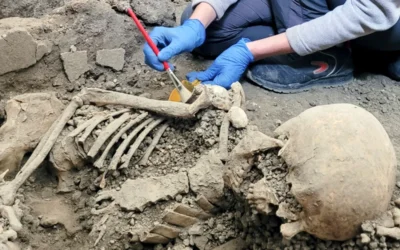What is Interpersonal Reconstructive Therapy (IRT)?
Interpersonal Reconstructive Therapy (IRT) is a comprehensive psychotherapeutic approach that focuses on understanding and modifying maladaptive relational patterns rooted in early life experiences. Developed by Dr. Lorna Smith Benjamin, IRT integrates concepts from attachment theory, psychodynamic therapy, and cognitive-behavioral approaches to address complex and chronic psychological issues.
At its core, IRT posits that many psychological problems stem from internalized patterns of relating that were adaptive in childhood but have become problematic in adulthood. The therapy aims to help clients recognize these patterns, understand their origins, and develop healthier ways of interacting with themselves and others.
Who Created Interpersonal Reconstructive Therapy?
Interpersonal Reconstructive Therapy was developed by Dr. Lorna Smith Benjamin, a renowned psychologist and researcher in the field of personality disorders and interpersonal relationships. Dr. Benjamin’s journey to creating IRT began with her early work in the 1960s and 1970s, studying interpersonal behavior and developing assessment tools to measure interpersonal patterns.
Dr. Benjamin was born in 1934 and received her Ph.D. in Clinical Psychology from the University of Wisconsin-Madison in 1960. Her academic career has been marked by significant contributions to the understanding of personality disorders and interpersonal dynamics. She has held faculty positions at several prestigious institutions, including the University of Wisconsin-Madison and the University of Utah.
Throughout her career, Dr. Benjamin has been influenced by and collaborated with many prominent figures in psychology, including:
- Harry Stack Sullivan, whose interpersonal theory of psychiatry greatly influenced her thinking
- Timothy Leary, with whom she worked on early versions of interpersonal circumplex models
- Aaron Beck, whose cognitive therapy concepts she integrated into her approach
- John Bowlby and Mary Ainsworth, whose attachment theory forms a cornerstone of IRT
Dr. Benjamin’s development of IRT was driven by her frustration with existing therapeutic approaches that she felt did not adequately address the complex relational patterns underlying many psychological disorders, particularly personality disorders.
How Was Interpersonal Reconstructive Therapy Developed?
The development of Interpersonal Reconstructive Therapy was a gradual process that spanned several decades. Key milestones in its development include:
- 1970s: Dr. Benjamin develops the Structural Analysis of Social Behavior (SASB) model, a comprehensive framework for analyzing interpersonal interactions.
- 1980s: She begins to integrate SASB with concepts from attachment theory and cognitive therapy, laying the groundwork for IRT.
- 1993: Publication of “Interpersonal Diagnosis and Treatment of Personality Disorders,” which outlines many of the core principles of IRT.
- 2003: The first comprehensive book on IRT, “Interpersonal Reconstructive Therapy: Promoting Change in Nonresponders,” is published.
- 2006: Dr. Benjamin establishes the Interpersonal Reconstructive Therapy Institute to train therapists in the approach.
- 2018: Publication of “Interpersonal Reconstructive Therapy for Anger, Anxiety, and Depression: It’s About Broken Hearts, Not Broken Brains,” further refining and expanding the IRT approach.
The development of IRT was influenced by several cultural and scientific factors:
- The growing recognition of the importance of early life experiences and attachment in shaping adult personality and psychopathology.
- Advances in neuroscience and understanding of brain plasticity, supporting the idea that ingrained patterns can be changed.
- A shift in mental health treatment towards more integrative approaches that combine insights from different theoretical orientations.
- Increasing awareness of the limitations of purely symptom-focused treatments for complex, chronic psychological issues.
What Are the Core Assumptions and Tenets of Interpersonal Reconstructive Therapy?
Interpersonal Reconstructive Therapy is built on several key assumptions and principles:
- Copy Process: IRT posits that individuals internalize patterns of relating from important early relationships, which they then “copy” in their adult relationships and self-treatment.
- Gifts of Love: These internalized patterns are seen as “gifts of love” – adaptive strategies developed to maintain attachment and safety in childhood.
- Maladaptive Adult Functioning: While these patterns were adaptive in childhood, they often lead to problems in adult life when applied inflexibly to new situations.
- Red and Green Trails: IRT conceptualizes problematic patterns as “red trails” and healthier alternatives as “green trails.”
- Collaborative Empiricism: The therapist and client work together to identify and understand relational patterns.
- Importance of Case Formulation: IRT emphasizes the development of a comprehensive case formulation that links current problems to historical relationship patterns.
- Focus on Change: The therapy aims not just at insight, but at actively changing maladaptive patterns.
- Integration of Multiple Therapeutic Approaches: IRT draws on psychodynamic, cognitive-behavioral, and interpersonal techniques as needed.
Is Interpersonal Reconstructive Therapy Evidence-Based?
While Interpersonal Reconstructive Therapy has a strong theoretical foundation and has been used successfully in clinical practice for decades, the research base for its efficacy is still developing. Here’s an overview of the current state of evidence:
- Case Studies and Clinical Reports: There are numerous published case studies and clinical reports demonstrating the effectiveness of IRT, particularly with complex cases and personality disorders.
- Quasi-Experimental Studies: Several studies have shown positive outcomes for IRT in naturalistic settings, including improvements in symptoms and interpersonal functioning.
- Randomized Controlled Trials (RCTs): As of 2024, there are limited RCTs specifically testing IRT. This is partly due to the complexity and individualized nature of the treatment, which makes it challenging to standardize for research purposes.
- Component Studies: Some studies have examined specific components of IRT, such as the use of the SASB model in therapy, and found them to be effective.
- Comparative Studies: A few studies have compared IRT to other treatments, showing promising results, particularly for complex cases that have not responded well to other therapies.
While more rigorous research is needed, particularly in the form of RCTs, the existing evidence suggests that IRT can be an effective treatment, especially for individuals with complex, chronic psychological issues that have not responded well to other forms of therapy.
It’s worth noting that the lack of extensive RCT evidence does not necessarily mean the therapy is ineffective. Many well-established and widely used therapies face similar challenges in producing RCT evidence, particularly when dealing with complex, long-term psychological issues.
What Psychotherapy Models is Interpersonal Reconstructive Therapy Similar To?
Interpersonal Reconstructive Therapy shares theoretical and practical similarities with several other psychotherapy models:
- Psychodynamic Therapy: Like IRT, psychodynamic approaches emphasize the importance of early life experiences and unconscious processes in shaping current behavior and relationships.
- Attachment-Based Therapy: IRT heavily draws on attachment theory, similar to other attachment-focused therapies.
- Cognitive-Behavioral Therapy (CBT): IRT incorporates cognitive and behavioral techniques, although it places them within a broader relational context.
- Schema Therapy: Both IRT and schema therapy focus on identifying and modifying deep-seated patterns of thinking and behaving.
- Interpersonal Therapy (IPT): IRT shares IPT’s focus on interpersonal relationships as a key factor in psychological well-being.
- Transactional Analysis: Both approaches use models to conceptualize interpersonal interactions and internal dialogues.
- Metacognitive Interpersonal Therapy: This approach, like IRT, focuses on interpersonal schemas and their impact on current functioning.
- Mentalization-Based Treatment: Both approaches emphasize the importance of understanding one’s own and others’ mental states.
- Dialectical Behavior Therapy (DBT): While the techniques differ, both IRT and DBT were developed with a focus on treating complex, difficult-to-treat cases.
- Psychobiological Approach to Couple Therapy (PACT): Both approaches integrate attachment theory and neurobiology in understanding relational patterns.
How Does Interpersonal Reconstructive Therapy Conceptualize Trauma, the Unconscious, and Identity?
Interpersonal Reconstructive Therapy offers unique perspectives on trauma, the unconscious, and identity:
Trauma
In IRT, trauma is viewed primarily through a relational lens. Traumatic experiences are seen as disruptions to the attachment system that lead to the formation of maladaptive relational patterns. These patterns, while initially protective, become sources of ongoing “self-trauma” as they are replayed in adult life.
IRT recognizes both “big T” traumas (such as abuse or neglect) and “small t” traumas (such as chronic misattunement or emotional neglect). The therapy focuses on how these experiences shape the individual’s expectations of self and others, and how these expectations continue to influence current relationships and self-treatment.
The Unconscious
IRT views the unconscious not as a repository of repressed desires, but as a set of implicit relational patterns and expectations. These patterns operate outside of conscious awareness, guiding behavior and emotional responses in ways that often perplex the individual.
The goal of IRT is to bring these unconscious patterns into awareness, not through free association or dream analysis, but through careful examination of current relationships and behaviors. The therapy aims to make the implicit explicit, allowing for conscious choice and change.
Identity and Self
In IRT, identity and sense of self are seen as fundamentally relational constructs. The self is viewed as a collection of internalized relational patterns, or “introjects,” derived from important early relationships.
These introjects form the basis of how an individual treats themselves and expects to be treated by others. IRT posits that psychological distress often arises when these internalized patterns conflict with current reality or with each other.
The goal of therapy is not to create a unitary, fixed sense of self, but to develop a more flexible, adaptive set of relational patterns. This allows for a sense of self that can maintain continuity while adapting to different contexts and relationships.
What Are the Interventions and Techniques Used in Interpersonal Reconstructive Therapy?
Interpersonal Reconstructive Therapy employs a variety of interventions and techniques, drawing from various therapeutic traditions but always within the framework of understanding and modifying relational patterns. Here are some of the key interventions:
1. SASB-Based Analysis
The Structural Analysis of Social Behavior (SASB) model is used to map out relational patterns. This involves:
- Identifying recurrent patterns in current relationships
- Linking these patterns to historical relationships
- Exploring how these patterns are internalized as self-treatment
2. Copy Process Identification
This technique involves helping clients recognize how they are “copying” patterns from important early relationships in their current life. This includes:
- Identifying similarities between current and past relationships
- Exploring the adaptive function these patterns served in childhood
- Recognizing how these patterns may be maladaptive in the present
3. Gift of Love Reframing
This intervention involves helping clients understand their problematic behaviors as misguided attempts to maintain attachment and safety. This includes:
- Exploring the positive intentions behind seemingly negative behaviors
- Recognizing how these “gifts” may no longer be serving the client
- Developing compassion for the self that developed these patterns
4. Red Trail/Green Trail Analysis
This technique involves:
- Mapping out problematic relational patterns as “red trails”
- Identifying healthier alternative patterns as “green trails”
- Practicing shifting from red to green trails in therapy and daily life
5. Collaborative Case Formulation
The therapist and client work together to develop a comprehensive understanding of the client’s issues. This involves:
- Linking current problems to historical patterns
- Identifying key introjects and their impact on current functioning
- Developing hypotheses about how change might occur
6. Interpersonal Role-Playing
This technique involves:
- Enacting problematic relational scenarios in therapy
- Practicing new, healthier ways of interacting
- Exploring the emotions and beliefs that arise during these enactments
7. Cognitive Restructuring
While maintaining a relational focus, IRT also addresses maladaptive thoughts:
- Identifying thoughts that maintain problematic patterns
- Exploring the historical origins of these thoughts
- Developing more adaptive, flexible ways of thinking
8. Emotional Processing
IRT emphasizes the importance of working with emotions:
- Helping clients identify and name emotions
- Exploring the relational context of emotions
- Developing healthier ways of expressing and regulating emotions
9. Behavioral Experiments
Clients are encouraged to try new behaviors outside of therapy:
- Designing experiments to test new ways of relating
- Reflecting on the outcomes of these experiments
- Gradually expanding the range of adaptive behaviors
10. Mindfulness Techniques
IRT incorporates mindfulness to help clients:
- Observe their thoughts and feelings without judgment
- Become more aware of automatic relational patterns
- Develop greater capacity for present-moment awareness
11. Inner Dialogue Work
This involves:
- Identifying different “voices” or parts of the self
- Exploring how these parts relate to internalized relationships
- Fostering more compassionate, adaptive inner dialogue
12. Attachment-Based Interventions
These include:
- Creating a secure base in the therapeutic relationship
- Exploring and repairing attachment ruptures in therapy
- Gradually expanding secure attachment experiences to other relationships
13. Narrative Techniques
IRT uses storytelling and narrative approaches to:
- Help clients construct more coherent life narratives
- Identify themes and patterns across different life experiences
- Develop new, more adaptive narratives about self and others
14. Body-Based Interventions
Recognizing the embodied nature of relational patterns, IRT may incorporate:
- Body awareness exercises
- Exploration of physical sensations associated with relational patterns
- Using movement or posture to explore and modify relational stances
15. Metaphor and Imagery Work
IRT often uses metaphors and imagery to:
- Represent complex relational patterns in accessible ways
- Facilitate emotional processing and insight
- Create vivid representations of desired changes
These interventions are not used in a rigid, manualized way, but are flexibly applied based on the individual client’s needs and the specific relational patterns being addressed. The overarching goal is always to help clients recognize, understand, and modify maladaptive relational patterns while developing more adaptive ways of relating to self and others.
What Are the Goals and Stages of Treatment in Interpersonal Reconstructive Therapy?
Interpersonal Reconstructive Therapy is typically a longer-term treatment approach, recognizing that changing deeply ingrained relational patterns takes time and sustained effort. The goals and stages of treatment are as follows:
Overall Goals of IRT:
- Increase awareness of maladaptive relational patterns
- Understand the historical origins and adaptive functions of these patterns
- Develop more flexible, adaptive ways of relating to self and others
- Improve overall psychological functioning and quality of life
- Reduce symptoms associated with the presenting problems
- Enhance capacity for secure attachments and healthy relationships
Stages of Treatment:
1. Assessment and Case Formulation
- Gather comprehensive history
- Identify current symptoms and relational patterns
- Use SASB to map out key relational dynamics
- Develop a collaborative case formulation linking past and present
2. Establishing Therapeutic Alliance
- Build trust and rapport
- Address any initial resistances or fears about therapy
- Begin to provide a corrective emotional experience
3. Increasing Awareness
- Help client recognize maladaptive patterns in current life
- Link current patterns to historical relationships
- Explore the “gift of love” concept to understand pattern origins
4. Deepening Understanding
- Analyze specific instances of problematic patterns in detail
- Explore emotional and cognitive components of patterns
- Identify triggers and maintaining factors
5. Initiating Change
- Introduce the concept of “red trails” and “green trails”
- Begin experimenting with new behaviors in therapy
- Design and implement small behavioral experiments outside therapy
6. Working Through
- Address resistances and setbacks
- Process emotions associated with changing long-standing patterns
- Continue practicing and refining new relational skills
7. Consolidation and Generalization
- Help client apply new patterns more consistently across different contexts
- Work on internalizing new, more adaptive “introjects”
- Address any remaining symptom
s or problem areas
8. Termination and Relapse Prevention
- Process feelings about ending therapy
- Review progress and lessons learned
- Develop strategies for maintaining gains and handling future challenges
It’s important to note that these stages are not strictly linear. The therapy often involves cycling back through earlier stages as new layers of relational patterns are uncovered and addressed. The pace and emphasis of treatment are tailored to each client’s unique needs and progress.
In What Contexts is Interpersonal Reconstructive Therapy Usually
In What Contexts is Interpersonal Reconstructive Therapy Usually Practiced?
Interpersonal Reconstructive Therapy is typically practiced in a variety of clinical settings, particularly those dealing with complex, chronic, or treatment-resistant cases. Common contexts include:
- Outpatient Mental Health Clinics: IRT is often used in specialized clinics that focus on long-term, in-depth psychotherapy.
- Private Practice: Many IRT practitioners work in private practice settings, allowing for the flexibility and continuity needed for this approach.
- University Counseling Centers: Some university clinics, especially those with doctoral training programs, may offer IRT.
- Psychiatric Hospitals: IRT can be adapted for inpatient settings, particularly for patients with severe personality disorders or complex trauma histories.
- Residential Treatment Centers: Long-term residential programs may incorporate IRT principles, especially for treating personality disorders or chronic mental health conditions.
- Specialized Personality Disorder Clinics: Given its effectiveness with personality disorders, IRT is often practiced in clinics specializing in these conditions.
- Trauma Treatment Centers: IRT’s focus on relational patterns makes it relevant for treating complex trauma.
- Research Settings: As interest in IRT grows, it’s increasingly being studied and practiced in academic and research contexts.
- Training Institutes: Dedicated IRT training programs and institutes offer both therapy and professional development opportunities.
- Integrative Mental Health Programs: Some programs that combine psychotherapy with other modalities (e.g., mindfulness, body-based approaches) may incorporate IRT principles.
It’s worth noting that IRT is not typically a first-line treatment for acute or short-term issues. It’s most often employed when briefer, more symptom-focused treatments have not been sufficient, or when there’s a clear need to address deep-seated relational patterns.
What is Unique and Different About Interpersonal Reconstructive Therapy?
Interpersonal Reconstructive Therapy stands out in several ways:
- Integrated Theoretical Framework: IRT uniquely combines attachment theory, interpersonal theory, and cognitive-behavioral concepts into a cohesive whole.
- SASB Model: The use of the Structural Analysis of Social Behavior model provides a detailed, nuanced way of mapping relational patterns.
- “Gift of Love” Concept: IRT’s framing of maladaptive behaviors as misguided attempts at self-protection is a compassionate, insightful approach.
- Copy Process Focus: The emphasis on how early relational patterns are “copied” in current life offers a clear explanation for persistent problems.
- Flexibility Within Structure: IRT provides a structured framework for understanding problems while allowing for flexible application of techniques.
- Emphasis on Case Formulation: The detailed, collaborative case formulation process in IRT is more extensive than in many other therapies.
- Integration of Multiple Levels of Analysis: IRT considers intrapsychic, interpersonal, and systems levels in understanding and treating problems.
- Tailored for Complex Cases: Unlike many manualized treatments, IRT is specifically designed for complex, treatment-resistant cases.
- Balance of Past and Present: IRT strikes a unique balance between exploring historical influences and focusing on current patterns.
- Metacommunication Emphasis: The therapy places a strong emphasis on discussing the therapeutic relationship itself as a vehicle for change.
How Might Forgotten Techniques from Interpersonal Reconstructive Therapy be Relevant to Modern Practice?
While IRT is a relatively modern therapy, some of its techniques or emphases may be overlooked in current practice. Here are some “forgotten” or underutilized aspects of IRT that could be valuable for modern therapists:
- Detailed Interpersonal Analysis: The meticulous mapping of relational patterns using the SASB model could benefit therapists from various orientations.
- Copy Process Exploration: Explicitly linking current behaviors to historical patterns could enhance insight in many therapeutic contexts.
- Gift of Love Reframing: This compassionate way of understanding maladaptive behaviors could be integrated into various treatment approaches.
- Red Trail/Green Trail Conceptualization: This vivid metaphor for behavior change could be useful in many types of therapy.
- Integrating Attachment and Cognitive Concepts: IRT’s synthesis of these areas could inform more integrative approaches to treatment.
- Focus on Self-Treatment Patterns: Exploring how clients treat themselves based on internalized relationships is a valuable but often overlooked area.
- Emphasis on Therapist’s Own Patterns: IRT’s focus on the therapist’s awareness of their own relational patterns could enhance therapist training and supervision.
- Detailed Case Formulation: The comprehensive, collaborative case formulation process in IRT could benefit case conceptualization in various therapies.
- Metacommunication Techniques: IRT’s emphasis on discussing the therapy relationship itself could enhance the effectiveness of other treatment approaches.
- Integration of Systems Perspectives: Considering both intrapsychic and broader systemic influences could enrich other individual therapy approaches.
Modern therapists could consider incorporating these elements into their practice, even if not fully adopting the IRT model. For example:
- A CBT therapist might use the “gift of love” concept to build empathy and reduce shame around maladaptive behaviors.
- A psychodynamic therapist might incorporate the SASB model to provide a more structured analysis of transference patterns.
- A humanistic therapist might use the red trail/green trail metaphor to help clients visualize and work towards change.
- An attachment-focused therapist might use IRT’s detailed exploration of copy processes to enhance understanding of attachment patterns.
By integrating these “forgotten” techniques, modern therapists can add depth and nuance to their work, particularly when dealing with complex or treatment-resistant cases.
Timeline of Interpersonal Reconstructive Therapy’s Development
Here’s a detailed timeline of the creation, dissemination, and development of Interpersonal Reconstructive Therapy:
1934: Lorna Smith Benjamin is born.
1960: Benjamin receives her Ph.D. in Clinical Psychology from the University of Wisconsin-Madison.
1960s-1970s: Benjamin begins developing the Structural Analysis of Social Behavior (SASB) model, laying the groundwork for IRT.
1974: Benjamin publishes “Structural Analysis of Social Behavior” in Psychological Review, introducing the SASB model to the wider psychological community.
1980s: Benjamin starts integrating SASB with attachment theory and cognitive therapy concepts, beginning to formulate what would become IRT.
1993: Publication of “Interpersonal Diagnosis and Treatment of Personality Disorders” by Benjamin, which outlines many of the core principles of what would become IRT.
1996: Benjamin publishes “Interpersonal Diagnosis and Treatment of Personality Disorders: A Structural Approach,” further refining her ideas.
2003: The first comprehensive book on IRT, “Interpersonal Reconstructive Therapy: Promoting Change in Nonresponders,” is published, officially introducing IRT as a distinct therapeutic approach.
2006: Benjamin establishes the Interpersonal Reconstructive Therapy Institute to train therapists in the approach.
2010s: IRT begins to gain more recognition in the psychotherapy community, with increasing research and clinical application.
2018: Publication of “Interpersonal Reconstructive Therapy for Anger, Anxiety, and Depression: It’s About Broken Hearts, Not Broken Brains,” further refining and expanding the IRT approach.
2020s: Continued development and dissemination of IRT, with growing interest in its application to complex cases and personality disorders.
This timeline reflects the gradual development of IRT over several decades, from its roots in Benjamin’s early work on interpersonal behavior to its current status as a comprehensive therapeutic approach.
Bibliography and Further Reading
Benjamin, L. S. (1974). Structural analysis of social behavior. Psychological Review, 81(5), 392–425.
Benjamin, L. S. (1993). Interpersonal diagnosis and treatment of personality disorders. Guilford Press.
Benjamin, L. S. (1996). Interpersonal diagnosis and treatment of personality disorders: A structural approach. Guilford Press.
Benjamin, L. S. (2003). Interpersonal reconstructive therapy: Promoting change in nonresponders. Guilford Press.
Benjamin, L. S. (2018). Interpersonal reconstructive therapy for anger, anxiety, and depression: It’s about broken hearts, not broken brains. American Psychological Association.
Critchfield, K. L., & Benjamin, L. S. (2008). Internalized representations of early interpersonal experience and adult relationships: A test of copy process theory in clinical and non-clinical settings. Psychiatry: Interpersonal and Biological Processes, 71(1), 71-92.
Critchfield, K. L., & Benjamin, L. S. (2010). Assessment of repeated relational patterns for individual cases using the SASB-based Intrex questionnaire. Journal of Personality Assessment, 92(6), 480-489.
Karpiak, C. P., & Benjamin, L. S. (2004). Therapist affirmation and the process and outcome of psychotherapy: Two sequential analytic studies. Journal of Clinical Psychology, 60(6), 659-676.
McCullough, L., & Andrews, S. (2001). Assimilative integration: Short‐term dynamic psychotherapy for treating affect phobias. Clinical Psychology: Science and Practice, 8(1), 82-97.
Strack, S., & Horowitz, L. M. (2011). Handbook of interpersonal psychology: Theory, research, assessment, and therapeutic interventions. John Wiley & Sons.


























0 Comments